Patch Testing for Contact Dermatitis
 Have you experienced redness and irritation after using a skin-care product or trying out a new detergent? How about a skin reaction with no explanation? If so, you may have suffered from contact dermatitis, which occurs when contact with chemicals causes irritation or allergic reaction. Although most cases are not severe, contact dermatitis can be unpleasant and also frustrating if the cause is not clear.
Have you experienced redness and irritation after using a skin-care product or trying out a new detergent? How about a skin reaction with no explanation? If so, you may have suffered from contact dermatitis, which occurs when contact with chemicals causes irritation or allergic reaction. Although most cases are not severe, contact dermatitis can be unpleasant and also frustrating if the cause is not clear.
Allergic Contact Dermatitis
Allergic contact dermatitis is an immune response to an allergen. It can be itchy and can also make the skin dry, flaky, or scaly. However, the symptoms associated with this allergic reaction depend on your skin’s sensitivity. This substance may bring about other symptoms including oozing blisters, redness, leathery appearance, burning sensation, hives, sun sensitivity, and swelling.
Patch Testing and Why It’s Necessary
If you already know what you’re allergic to, that’s great! It will be much easier for you to avoid these chemicals and ingredients. However, if you came in contact with an allergen by accident, it is best to consult with a dermatologist to get the skin treatment you need. For those who suddenly develop patches of dermatitis due to unknown causes, patch testing is necessary.
Metals, leather, rubber, and cosmetics, for example, contain a number of chemicals that can cause allergic reactions. Through patch testing, you and your doctor will be able to identify the allergen. This will help your dermatologist determine which treatment is right for your skin and will be able to help you avoid the allergen in the future.
How Does Patch Testing Work?
An experienced dermatologist will perform the patch test. During the test, small amounts of certain substances are applied to your skin and secured with hypoallergenic tape. These are usually placed on the upper back to ensure they are not disturbed. You will need to come back after 48 hours to get the patches removed. At this time, your dermatologist will do a thorough examination of your skin’s reaction to the substances. Two additional days later, the specialist will examine the spots again to see if there is any delayed reaction.
Dermatologists have a standard set of substances they test on individuals with suspected Allergic Contact Dermatitis. This includes Balsam of Peru, benzocaine, lanolin or wool alcohols, rosin, rubber accelerators, quaternium-15, formaldehyde resin, formaldehyde, p-tert butylphenol, plants, paraben mix, paraphenylenediamine, nickel, neomycin, fragrances, imidazolidinyl urea, ethylenediamine, cobalt, epoxy resin, clioquinol, and chrome. This list includes additives in leather, ointments, clothes, and other items we come in contact with on a regular basis.
Please note that if your dermatologist suspects other allergens, more patches will be added for testing. This can include substances that you come in contact with in your workplace or substances contained in your specific makeup or creams. Bringing in samples of the products you use would also be useful to your doctor, especially if you suspect one of these products is causing the allergic reaction.
Test Results
Once the test results are in, your dermatologist will be able to give you details on what caused your recent allergic reaction. Your dermatologist will give you advice on how to avoid the substance you are allergic to. If the results reveal that you do not suffer from allergic contact dermatitis, you will be able to rule it out and your doctor can proceed with other tests to determine what is causing the skin irritation.
Irritant Contact Dermatitis
If an irritant caused the contact dermatitis, the symptoms are slightly different. This can include skin blistering and cracking because of extreme dryness, stiff or tight skin, swelling, ulcerations, and open sores. This form of contact dermatitis is caused by skin injuries due to environmental factors, chemicals, or friction. The severity of the condition can vary depending on the strength of the irritant, frequency or length of exposure, and skin susceptibility.
Solvents you have come in contact with including detergents, metalworking fluids, adhesives, acid, alkalis, friction, and water can also cause it. Sometimes, two or more of these irritants act together in irritating the skin.
Anyone can experience irritant contact dermatitis if they come into contact with an irritant. However, those who suffer from atopy (a predisposition to allergic reactions) are more susceptible to the condition.
Testing for Irritant Contact Dermatitis
Because this condition can coexist with allergic contact dermatitis, your dermatologist may decide to perform the test to rule this out. The rash typically heals on its own as long as you avoid exposure to the irritant, but special treatment is available if needed. Be sure to contact your dermatologist to get the right treatment for the condition.
If it’s necessary that you handle the irritant again, make sure to cover up and protect your skin. However, try to avoid them altogether if possible.
Patch testing is important to prevent and treat redness, irritation, and itching caused by contact with an allergen or irritant. If you think you may be experiencing contact dermatitis or would like to prevent it, contact us today.
Lear MorePreventing Dry Skin in the Winter
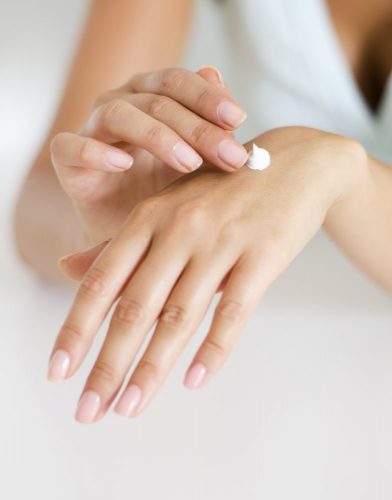
Use a Humidifier
One of the main reasons skin dries out in the winter is the lack of humidity in the air. It is best to use a humidifier in your house and work environment. If you have to choose one place, our advice would be the bedroom. Here, your skin will be exposed to moisture in the air throughout the night and keep it fresh for the day ahead.
Change Your Shower Routine
Some people take warmer and longer showers during the winter months. While this is great for defrosting cold toes, the steam will dilate pores and allow extra water to evaporate from your skin. Warm water also strips natural oils away. If you have to use warm water when you bathe, try to shorten your time in the shower. Drying appropriately is also important to keep your skin healthy. You should not rub your body because the towel is abrasive against the skin and may cause irritation, as well as dry skin to flake off and patches to spread. Instead, try gently patting away the water.
Stay Hydrated
Although you should always drink plenty of water throughout the day, it is particularly important during the winter months. You should drink 8-10 glasses of water per day. This will help to keep moisture in your skin. This is especially helpful if you frequently consume alcohol and coffee, which are diuretics and dehydrate you.
Protect Your Skin from the Outside Elements
When you must go outside, it is essential to protect your skin. You should cover any exposed areas with a scarf, gloves, and a hat. On a windy day, your skin may become dry and red from exposure. Also, winter may be a dark season, but the sun still shines brightly on certain days. It is necessary to wear a moisturizing sunscreen that will keep your skin protected from the sun as well.
Remove Makeup Carefully
The way you remove your makeup at the end of the night can dry out your skin. Many women use convenient cosmetic remover wipes, but, most of these products contain alcohol or similar ingredients that can be extremely drying. A better alternative is cold cream (an emulsion of water and oil). This item has been around since the second-century but still has a lot of great qualities. It will add moisture to your skin while effectively removing makeup.
Choose the Perfect Moisturizer
If you enter any store, you probably are bombarded with hundreds of moisturizing products. It is important to know how to choose a product that works for your specific skin type.
You may wonder whether to use a lotion, ointment, or cream. The difference is the amount of water that each contains. Most lotions are comprised of a high volume of water when compared to the other ointments and creams. This means that if you have extremely dry skin, a cream or ointment is a smarter option. As you read the ingredient labels, look for a product that contains humectants. These draw moisture from the inner layer of your skin to the other layers. A common humectant is a glycerin. Another helpful ingredient is an occlusive agent (Lanolin, mineral oil, or paraffin). These will create a barrier to your skin that seals in moisture and adds a protective wall.
Be sure to apply moisturizer after showering (and drying off correctly). You should also have a bottle of hand cream available at home and at work. This is especially important if you frequently wash your hands throughout the day.
Visit a Trusted Dermatologist
The best way to care for your skin during cold weather is to visit a dermatologist. An experienced doctor can offer more preventative tips that will keep your skin from drying out. They will also be able to provide recommendations based on your specific skin condition and type.
At Universal Dermatology & Vein Care, we are dedicated to finding a treatment that targets each patient’s individual needs. Whether you are having trouble with acne, varicose veins, or dry skin, you will benefit from our services. To learn more or to schedule an appointment, contact us today.
Lear MoreUnderstand and Care for Your Psoriasis With These 3 Tips

About Psoriasis
There are many conditions that affect the appearance of the skin. Some are serious, others simply embarrassing, and others a large nuisance. Psoriasis can fall into any of these.
Psoriasis is a condition that occurs when the deeper lying cells of the skin react to the skin’s surface and die in relatively large volumes. When this happens, red (and often itchy) plaques with white scales cover the skin. Psoriasis generally affects the scalp, knees, and elbows, but can also affect the soles of the feet palms of the hands, and the torso. The condition is usually treated by a dermatologist.
As irritating and unsightly as psoriasis can be, it is treatable. A large part of treating the condition includes soothing the itching and irritation while moisturizing the skin. This can be done by doing the following:
1. Taking warm baths
Taking warm baths, coupled with the use of mild soap, can go a long way in soothing irritation. You can opt to add oatmeal, dead sea salt or Epsom salt to the mix as well. The most important part, however, is the water temperature. Soap should be mild. Temperatures that are too hot or too cold can irritate the already sensitive skin further, as will soaps that are too harsh.
2. Use moisturizer
As a rule, anything you use on your skin to help with psoriasis, should be mild and not very prone to causing any ill or adverse effects. This applies to the moisturizer you choose. Nevertheless, one must moisturize. Moisturizing effectively will help with the scaling and flaking of the skin. Using a dehumidifier is also a great way to keep the skin moist.
3. UV Rays from the sun
Believe it or not, mild exposure to the sun’s rays can help with psoriasis by slowing the build-up of cells. You will need to wear sunscreen whenever going out into the sun. The sunscreen should be used on your healthy skin. Additionally, exposure to the sun, even with sunscreen, should be minimal as a general skin care rule. Furthermore, too much exposure can exacerbate the condition, as well as result in other conditions like skin cancer.
Of course, before trying any of the skin care tips for healthy skin above, it is important that you contact a dermatologist. For more information on psoriasis and how the condition can be effectively treated, contact our treatment centers today to speak with one of our qualified dermatologists. Universal Dermatology will be happy to assist you!
Lear More4 Top Reasons to See a Dermatologist for Mole Removal
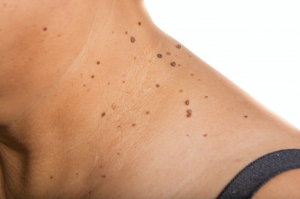
Most moles do not require treatment. A dermatologist can remove a mole due to pain, possible skin cancer risk, or for many cosmetic reasons. There are many “at home” treatment options as well, but some of these treatments can cause complications.
Here are four reasons to have your mole treatment performed by your dermatologist:
Skin disfigurement. “At home” treatments could end up leaving unattractive scars on your body or face. Especially if a mole is on your face, it is much less risky to have your mole treated by your dermatologist.
Infection. An infection can be caused by mole removal creams and other over-the-counter treatments. We can prevent infections from happening by properly closing the wound and treating the area.
Biopsy. Your mole could be pre-cancerous, which you could miss if you don’t have a proper exam conducted by your dermatologist. Your dermatologist will have your mole tested for cancer and help you start the proper treatments to help prevent the spread of potential skin cancer.
Growing back. Your mole may not completely be removed when using an at-home treatment. If your mole starts to grow back, this could be an early sign of melanoma, which means you need to see your dermatologist as soon as possible.
Our board-certified medical team specializes in all types of skin related matters. At Universal Dermatology & Vein Care, we can remove your skin moles with the appropriate techniques that don’t risk your health. Click here to make your appointment to discuss your mole treatment options today!
Lear More
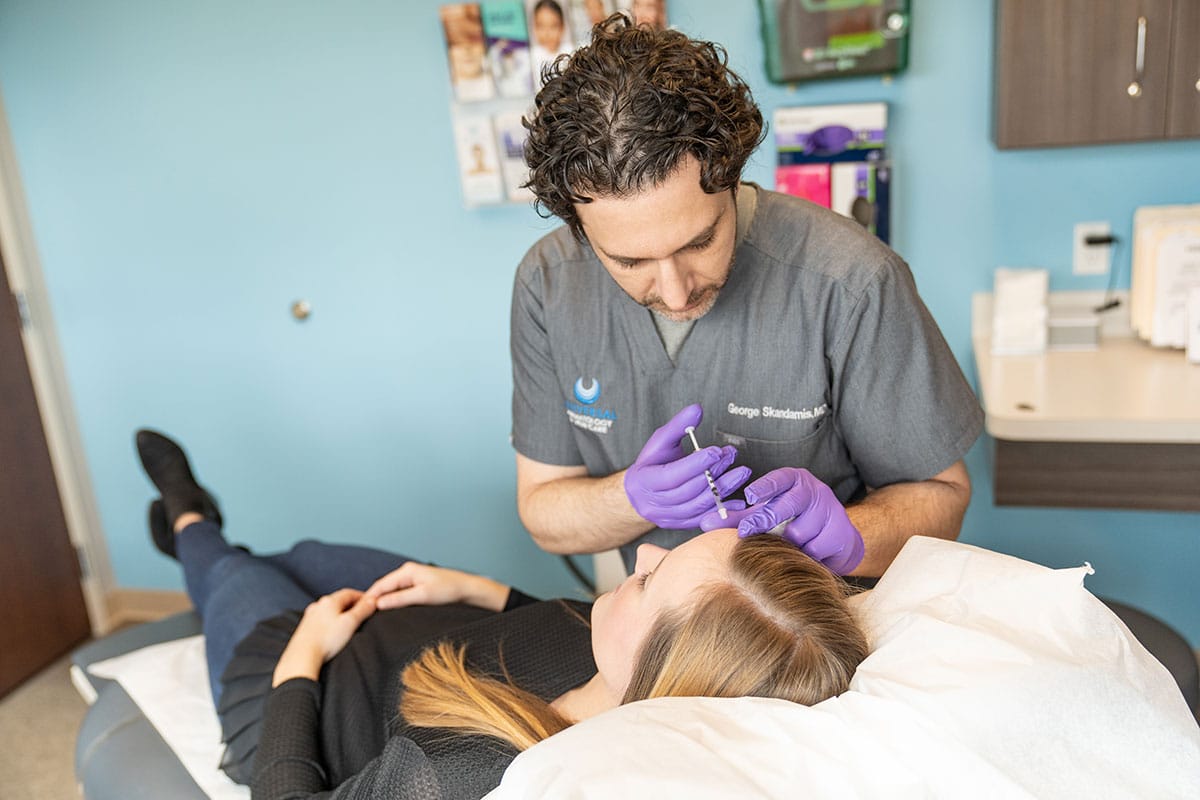 Our Dermatologists
Our Dermatologists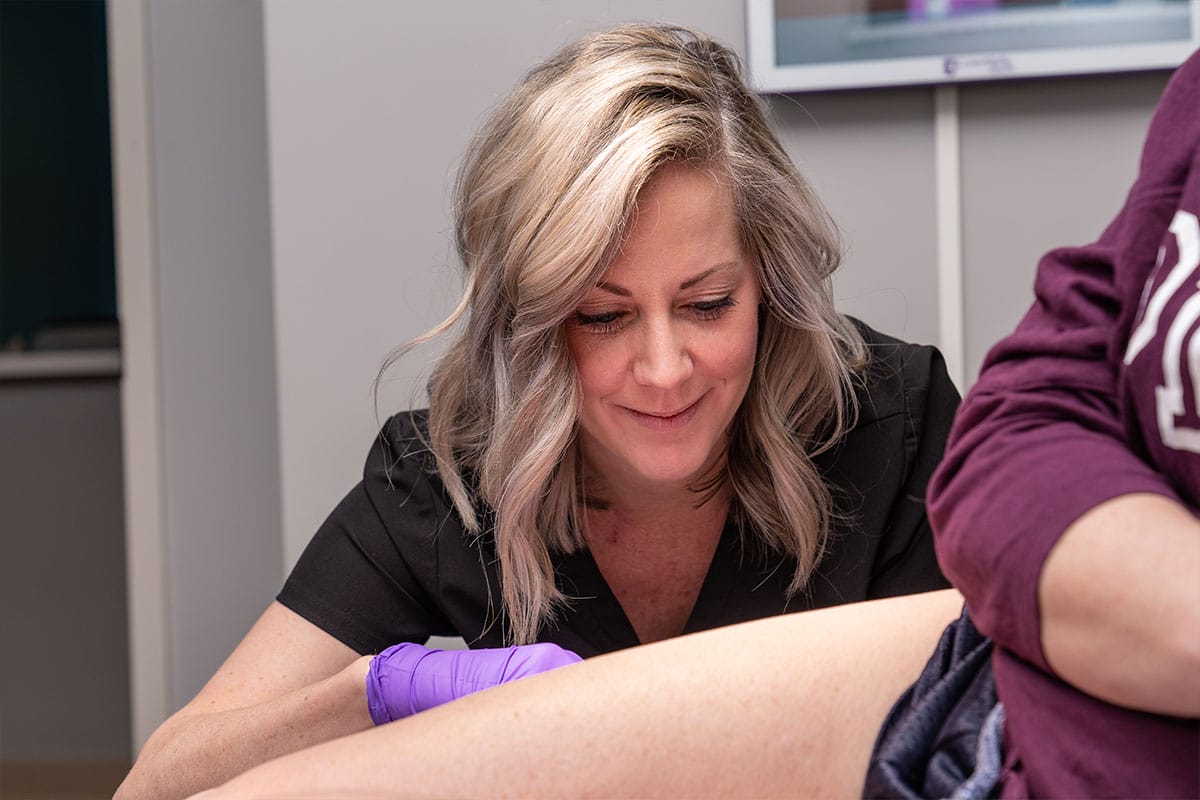 Our Providers
Our Providers Our Staff
Our Staff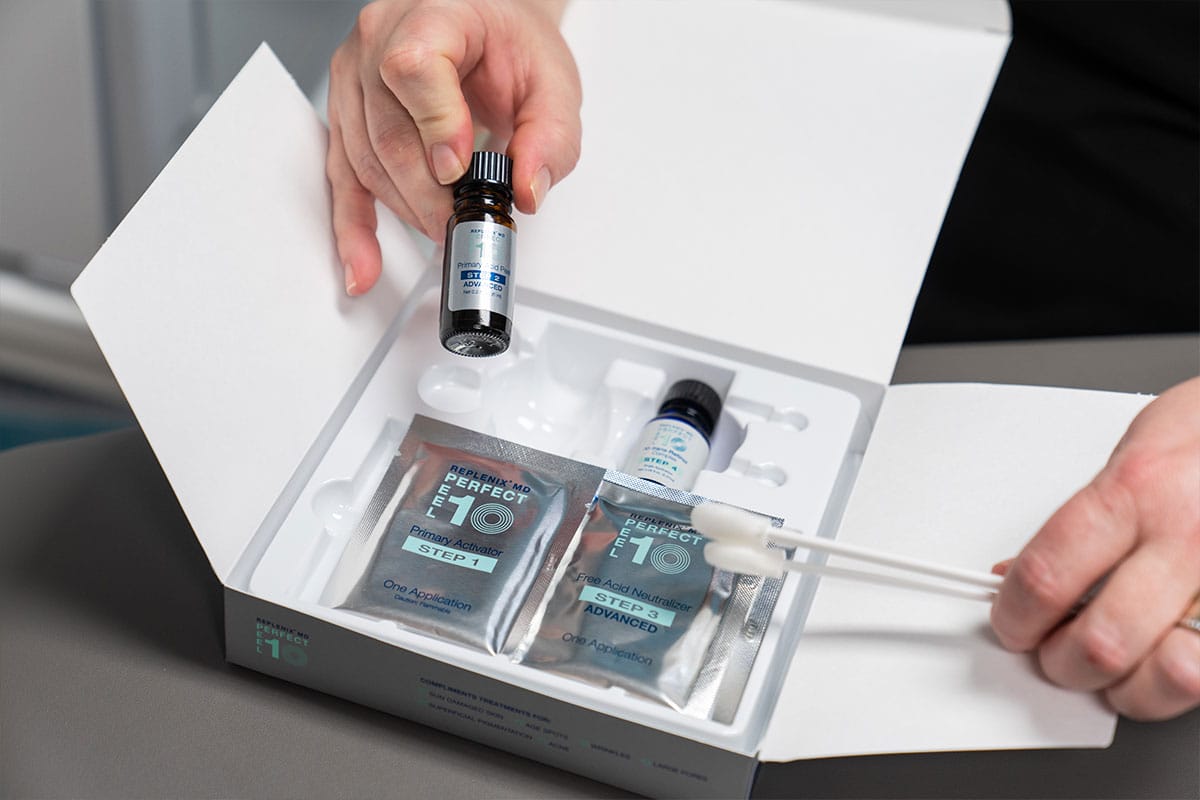 Specials
Specials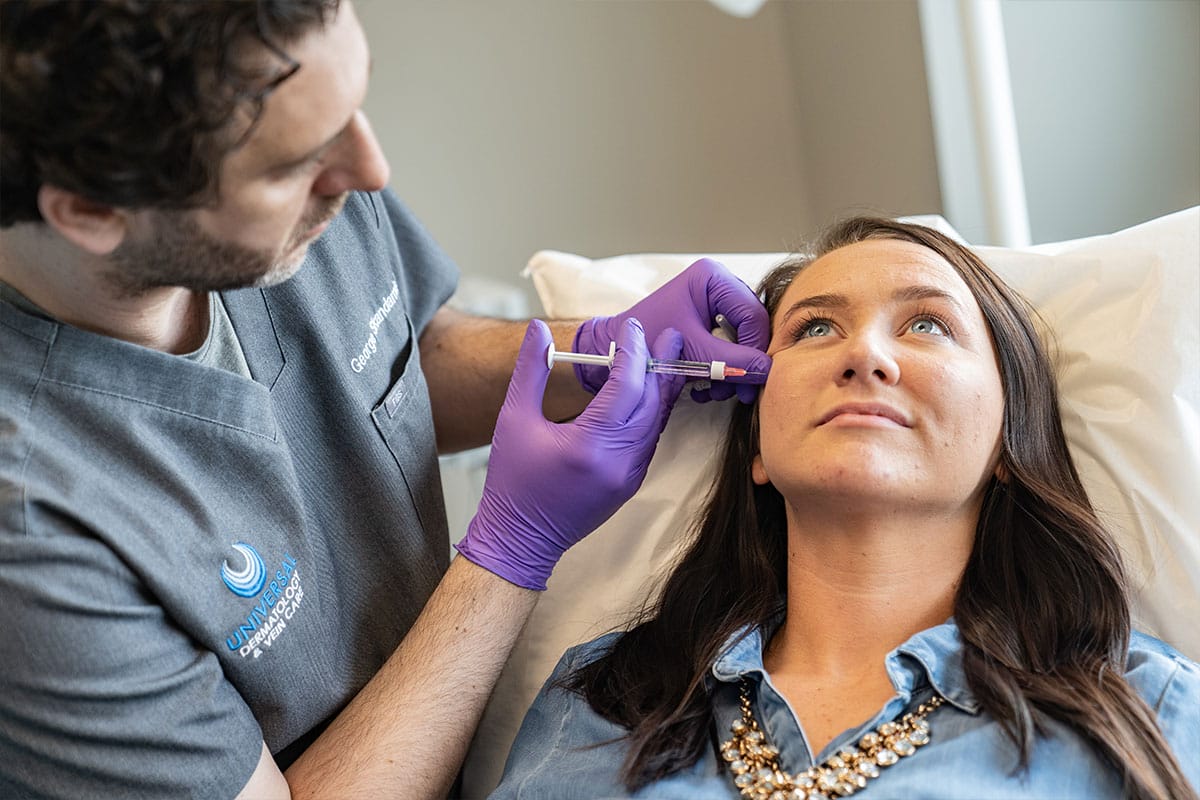 Financing
Financing Pay Bill Online
Pay Bill Online